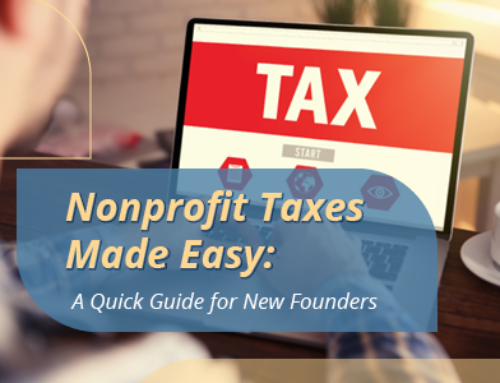
Many people use these terms interchangeably, but I think there’s a significant difference, especially for folks working in a small shop.
When you’re overworked and maybe overwhelmed, it’s easy to get caught up in the frenzy of raising money. You need the dollars, right? Gotta make budget, right? Programs can’t be delivered without funds, right?
Right, right, and right.
Except that it’s wrong to focus just on the dollars.
Fundraising is about raising money however you can.
Donor development is about building relationships with people who give because they believe in the work your nonprofit is doing. The deeper the relationship, the more they give.
Here’s the real problem when you don’t focus on donor development
Consider these situations:
Case A: The Executive Director of a small nonprofit is responsible for everything – administration, fundraising, supporting the Board, and overseeing operations. The organization hosts a variety of small fundraising events during the year, which generate some publicity and attract lots of people through ticket sales.
Case B: A regional nonprofit produces a very popular 5K race that is highly anticipated each year among area runners. A local restaurant is the main sponsor and provides a lavish picnic at the end of the race to all the runners.
Case C: A well-known and respected local organization sends out an annual direct mail piece in the Fall. The appeal brings in a small amount of money, which goes directly toward the bottom line of its annual fundraising campaign.
This all sounds good right?
Except that it’s not. In each of these cases, money is being raised. But that’s about it. None of these activities are sustainable they way they are. None are being leveraged to their capacity. And none are focused on donor development – creating relationships with donors.
Here’s the rest of the story…

What donor development might look like: If this organization cut out half of its events and instead spent the time on developing relationships with its best individual donor prospects, it would come out way ahead in the long run. All these events don’t provide sustainable funding for the organization and the important work it does in the community. Committed individual donors would give this nonprofit a strong base of support. Individuals who feel a connection to the organization and a loyalty to its mission will give year after year. It’s like having a group of good friends who will stick with you no matter what.
Case B: At first glance, this seems like a good event. But when you consider staff time in the budget, this event could be losing money or at best breaking even (which is very common with this kind of event). Also consider that the audience is very limited, and that people typically sign up for races to improve their personal running time, not necessarily to support the cause.
What donor development might look like: This organization needs to go one of two ways: either modify the event to appeal to a wider audience or stop doing the event. To modify the event, the nonprofit might add a walk, encouraging participants to seek pledges and focusing on how the money from the event will make a difference. This will help increase both the quantity and quality of participants. With careful strategy, the walk participants can become donors to the organization.
Case C: This is a case of smoke and mirrors. The organization is so focused on hitting their annual fundraising goal that they count every dollar they possibly can add in the total. Their direct mail appeal isn’t particularly well done and goes out to a list of people who aren’t regularly communicated with.

In each of these scenarios, looking at just the dollars raised doesn’t reveal the whole story. These activities are focused on the immediate money raised and are considered fundraising activities.
In order to build for the future, each organization needs to shift its focus away from fundraising and instead pay attention to donor development – developing donor relationships which lead to long-term sustainability.






Leave A Comment